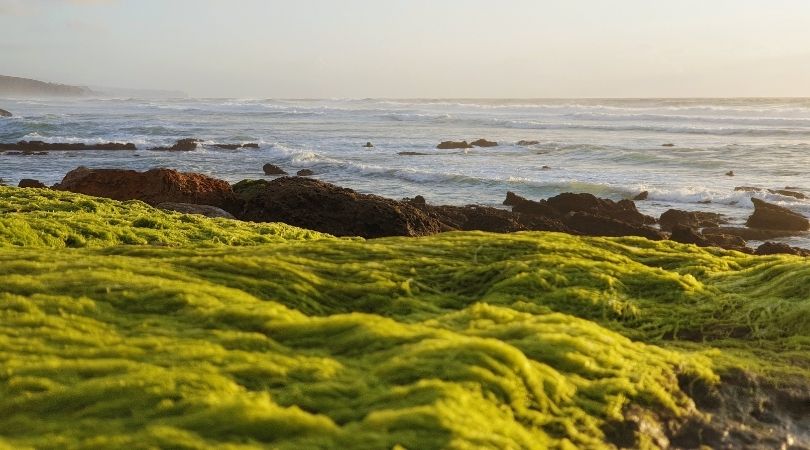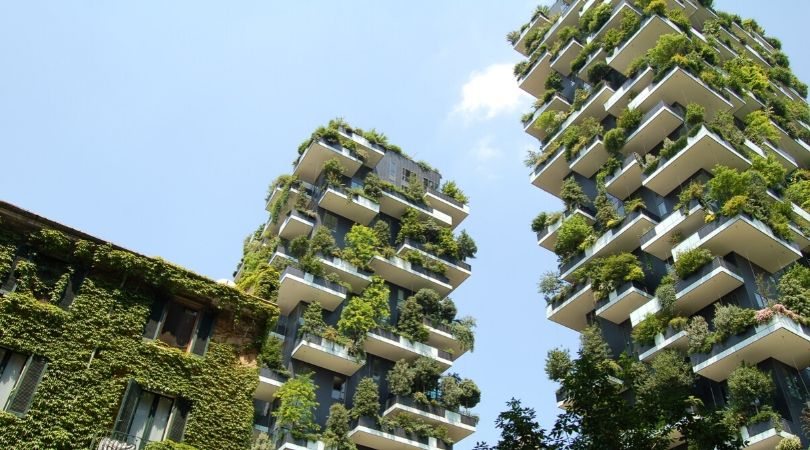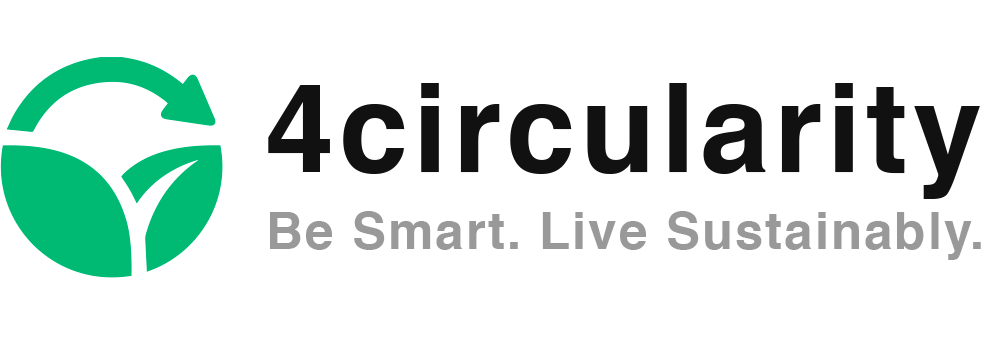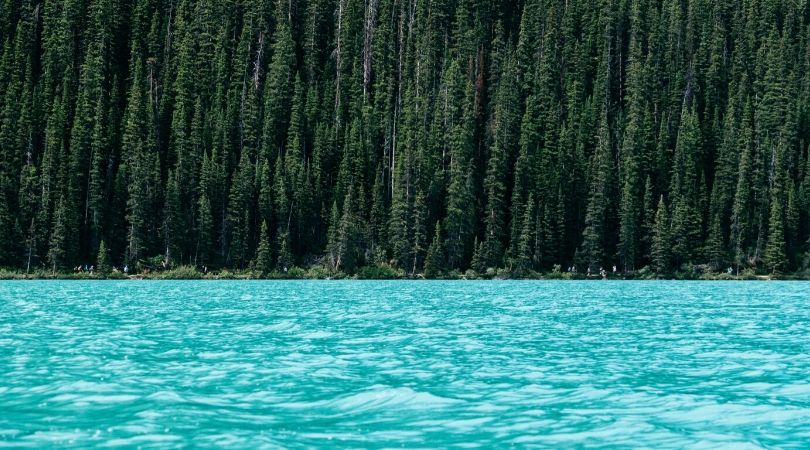Carbon sink definition
A carbon sink is a living system that absorbs carbon dioxide (CO2) from the atmosphere and turns it into oxygen (O). Trees are probably the most commonly known carbon sink. Other important natural carbon sinks are oceans, wetlands and peatlands. The impacts of carbon sinks are crucial for life because they provide oxygen that we breath.
The challenge today is that the available carbon sinks cannot keep up the pace absorbing the carbon faster than what is being released, mostly through fossil fuels burning and other human actions. This results in warmer temperatures which again leads to draining and drought of the natural reserve of carbon sinks.
There must be something we can do to restore the carbon sinks and create new ones using innovative technology. Individuals can contribute in the process by making sustainable choices in their daily lives. Moreover, businesses can make a much more bigger impact. They can really take an initiative in reducing their actions’ carbon footprint and actively search new ways of restoring natural carbon sinks which directly or indirectly touch their operations.
In this blog text, I shortly introduce the different natural carbon sinks and explain how the climate change and unsustainable production patterns disrupt their natural mechanism. At the end, I list solutions that businesses can use to restore existing carbon sinks and reproduce new carbon sinks as part of their sustainability objectives in becoming carbon neutral.
Carbon sink examples

What are the three types of natural carbon sinks? Forests store carbon naturally through photosynthesis. The carbon is stored into wood and other wood based materials. Forests store about one third of the global annual carbon emissions. Planting forests not only absorb carbon from the atmosphere but also help in the fight against desertification. That is why planting more trees is one of the most interesting solutions for tackling the climate change. The amount of stored carbon vary a lot based on the type and age of the forest. For example, an acre of mature forest can sequester a ton or more carbon annually.
Oceans cover around 70% of the world’s surface area which makes it the largest carbon sink. Oceans can uptake carbon in two ways. Firstly, by diffusing it from the atmosphere and secondly, by photosynthesis in plankton and algae. Due to the high amount of greenhouse gas emissions in atmosphere, oceans’ ability to dissolve carbon into oxygen has weaken. Acidification and temperature rise means that oceans are dissolving less carbon than healthy, cold water.
Peatlands are a type of wetlands. They are the most efficient natural carbon sinks in the world. Water is logged throughout the year in the peatland forming conditions for slow process of plant decomposition where dead plants accumulate to form peat. Over thousand(s) of years this material builds up and becomes several meters thick.
How climate change affects to the well-being of natural carbon sinks?

The importance of carbon sinks in mitigating the climate change cannot be underestimated. The climate change results in increasing temperatures and in disturbing the natural photosynthesis process throughout the ecosystem. Carbon dioxide builds up in the atmosphere trapping the heat from the sun which causes temperature rise.
When peatlands are drained, forests suffered from deforestation or long-lasting wildfires, the areas start releasing more greenhouse gases to the atmosphere than they are absorbing. Even though peatlands cover just three percentages of the Earth’s surface, the amount of carbon they hold inside is enormous. The carbon loss from peatlands only, would be equal to five percent of annual global fossil fuel emissions.
The climate change has devastating impacts to the oceans as well. Large amount of CO2 is dissolved to the oceans causing acidification and a change in pH value. Warming sea water and low pH value causes many changes in the activity of fish and seafloor plants. The state called “oxygen depletion” leads to the circumstances where no living organism, fish or seafloor plant can survive.
What businesses can do to restore and increase carbon sinks?

Recently, many businesses have set an objective in their sustainability plan to become carbon negative. This means that they commit in removing more carbon from the environment than they emit. Sounds like a huge challenge but it is feasible!
Reducing carbon footprint by decreasing emissions or becoming carbon neutral are simply not enough if we aim at keeping the global warming in 1.5 degrees Celsius. Businesses need to find more efficient solutions in reversing their environmental impact to the very minimum or even negative. Many information technology companies, such as Microsoft, has announced plans to become carbon negative by 2030. In August 2019, Forbes listed 101 companies committed to reduce their carbon footprints. The list gives a good overview of large international companies representing different industries with common sustainability goals.
Consequently, there are three ways how businesses can contribute. First is using exclusion. Business can avoid emitting greenhouse gases in many different ways and thus have zero effect to the well-being of ecosystems. For example, switching totally from fossil based energy to renewable energy or simply stopping to use single-use plastics is taking the exclusion approach.
Second is restoring carbon sinks. Business can engage in restoring deforested areas or badly acidified oceans and seas as a part of their social responsibility strategy and in collaboration with communities and civil society for instance. They can also provide equipment and technologies to soil regeneration, installing innovative water management systems to farmlands and raising awareness on sustainable production measures.
Third is offsetting carbon emissions. Business can offset their unavoidable greenhouse gas emissions by investing in different environmental and social projects around the world. Carbon offsetting is a good way to contribute in increasing the carbon sinks but it should not be the principal or only option.
In what ways businesses can contribute in restoring carbon sinks?

Planting trees is probably one of the biggest and cheapest ways for businesses to help taking carbon dioxide out from the environment. Planting trees to desertification areas or areas which have suffered from wildfires are one effective solution. Forests capture carbon in a fast pace and it is an opportunity to which businesses can easily get involved.
Agriculture is one of the major contributors to the climate change and thus it has been given a lot of attention in the last years. The ground issue is the unsustainable techniques in the land use which impoverish the land, consumes excessively the scarce water resources and makes the products unhealthy. By improving the current techniques used in agriculture, more carbon can be locked up from the atmosphere.
Businesses can take initiatives to restore degraded soil, share information about sustainable farming practices and provide tools to the local farmers in changing their production habits. Businesses operating in food and beverages or textiles industries, and working with farmers through their supply chain, should use their position and influence in changing production towards more sustainable and healthy direction. The purpose is to positively affect food safety and sustainable land use by respecting the ecosystem natural mechanisms.
Having less waste in the food chain and returning nutrients to the soil will increase the value of land and soil in the long term. Businesses should make long-term contracts with small farmers that will give them financial stability. As a result, they can profit from fewer risks, better land use and more productive cultivation without chemicals making harm to the soil. Businesses can make a huge impact in changing how agriculture is managed.

Recently, I came across interesting new carbon storage technologies. Below water, seagrass plants have a high ability to absorb carbon and enhance the oxygen level in the seawater. Planting seagrass to the seafloor have resulted in an effective way to improve the vegetation in coastal areas. On land, fields and the surrounding areas can be used to grow plants that store carbon dioxide deep into the ground. Keeping fields green, as long as possible, further increase the benefits.
Some technology called carbon capture and storage (CCS) exist where carbon is stored underground. Until today, only a few small pilot projects have been executed but risks for leakage are still high. Businesses could invest in research projects for making carbon capture and storage one future opportunity. For last but not least, businesses should contribute in raising awareness among young people on preserving carbon sinks.

